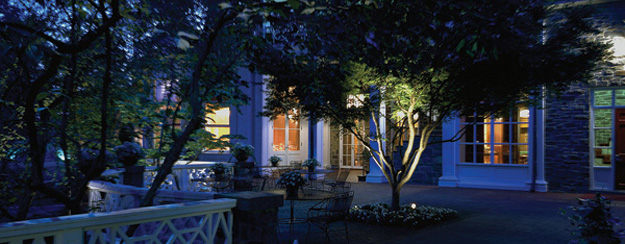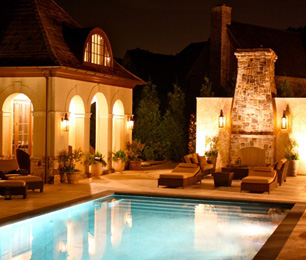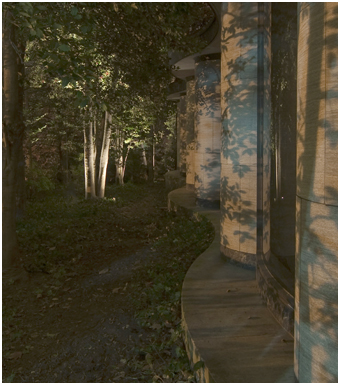

Garden Lighting at Dumbarton Oaks

Yet, Dumbarton Oaks is more than a world-class garden. In 1959, the Blisses commissioned the architect Philip Johnson to design a pavilion for the Robert Woods Bliss Collection of Pre-Columbian Art. This building – eight domed circular galleries set within a perfect square – was built in the Copse, one of the original landscapes at Dumbarton Oaks. Johnson employed curved glass walls to blend the landscape within the building, and maintained that he wanted the garden to "march right up to the museum displays and become part of them". While this effect is essential to the museum's character during the day, it became lost in the evening.
To bring the garden into the pavilion after dark, Gail Griffin, Director of Gardens, questioned members of the DC landscape design community for suggestions of an outdoor lighting design firm. Outdoor Illumination was cited as the best. After meeting Gail to discuss goals and possibilities, our senior team created a design of gentle down lighting from the trees' canopy, bringing texture to the broadleaf evergreens and ground plantings below. We lit trees and shrubs, Ilex opaca, Magnolia grandiflora and Pieris japonica, for a dramatic effect to be viewed from within the pavilion, and included perimeter sculpture and benches for additional interest. In addition to the Copse, our design included the lighting of the plantings, terrace, and walls outside the Music Room, where evening concerts are held throughout the winter.
While great design was critical to meeting objectives, another strong consideration was selection of fixtures to match the timeless nature of the property. Glare protection was a key priority. Lamp selection focused on subtle, not grand, effects. Implementation was equally relevant. Our master technicians, working in mature, densely planted gardens, were challenged to protect the plant material above ground and the root systems below. Our "footprint" was extremely gentle.
"To be within the lit spaces is magical and greatly enhances the nighttime experience of Dumbarton Oaks. We are pleased with every aspect of the work and look forward to years of enjoyment of the evening gardens created by Outdoor Illumination." At Outdoor Illumination, we thank Gail and Dumbarton Oaks for the privilege to work in one of America's greatest gardens.